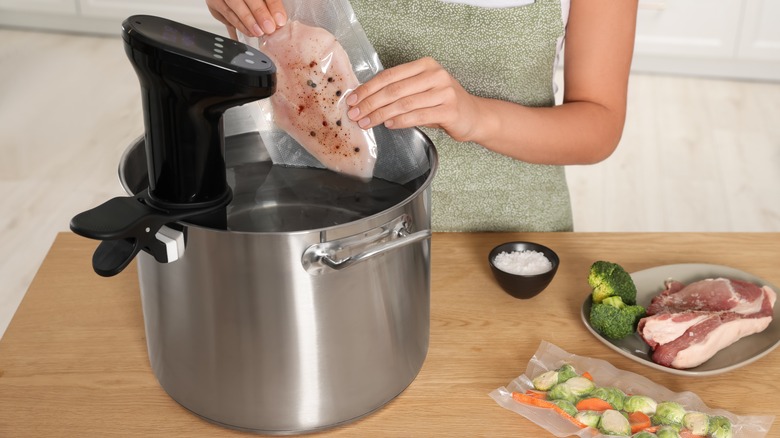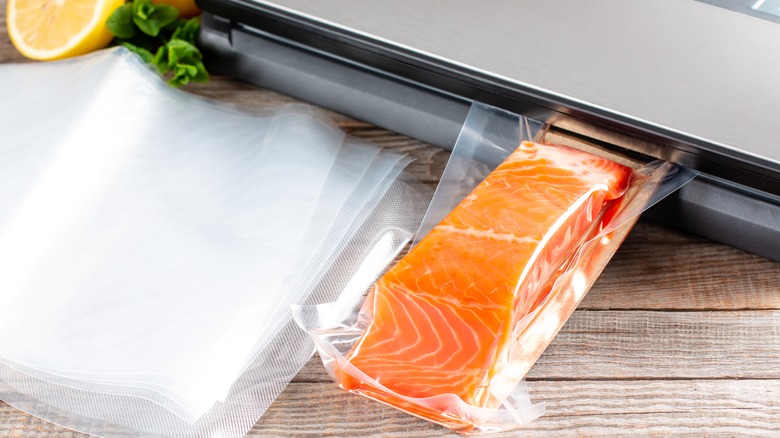Is Sous Vide Actually A Safe Cooking Method?
We may receive a commission on purchases made from links.
The sous vide method is revered for its restaurant-quality results and next-level temperature precision, and one of these gadgets deserves a spot in any gastronome's cupboard. With all of its pros, however, come some potential safety concerns.
Some wonder just how safe it is to heat your food in plastic. Plastics are known to release harmful toxins, such as BPA or phthalates, when heated to high temperatures. If you can't put plastic wrap in the microwave, the prospect of submerging a bag in hot water can give one pause. Another concern is how the method calls for cooking food at lower temperatures. Bacteria love temperatures in the danger zone, between 40 and 140 degrees Fahrenheit, and sous vide tends to toe that line. An additional safety concern around bacteria is the potential risk of its proliferation under vacuum sealing. Some bacteria, specifically those responsible for botulism, multiply when not a lot of oxygen is present — just like how the risk is elevated with canned foods.
The bottom line is, yes, sous vide is a perfectly safe cooking method — possibly even safer than traditional cooking methods due to the exact control over temperature the user holds. All of the concerns raised by critics are met with easy explanations to put the mind at ease. However, experimenting with a new cooking method at home comes with room for user error. Fortunately, there are some best practices you can follow to ensure you keep the process within the safety parameters.
How to cook with sous vide safely
You can mostly rest easy with the plastic concern, as bags designed specifically for sous vide are food safety grade and non-toxic, made of high- and low-density polyethylene and polypropylene. On top of that, the low temperatures used in sous vide cooking don't come anywhere near close to the levels of heat a microwave will reach. Unless something has gone wrong, the risk of toxins leaching is minimal, but you can use a round silicone roast rack to further reduce any possibility of the bags settling on the bottom of the pot.
When it comes to temperature concerns, the danger zone isn't as black-and-white with sous vide cooking. The method is more about temperature and time. Bacteria will still be killed off of food held at temperatures between 130 and 139 degrees Fahrenheit, it just needs to hang out at that temperature for a longer period of time. Bacteria are destroyed within minutes at or above 140 degrees, below that will take a couple of hours. In addition, most sous vide machines have a mechanism that will notify you when you're in the danger zone.
Lastly, vacuum-sealing concerns center more around how the bag is treated and stored after the cooking process, not during the cooking time. If not eating the food right away, chilling it with an ice bath before refrigeration to get it out of the danger zone as quickly as possible will eliminate the risk.

